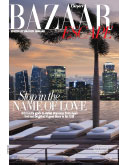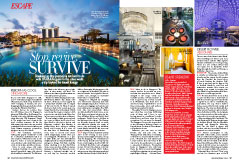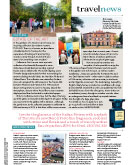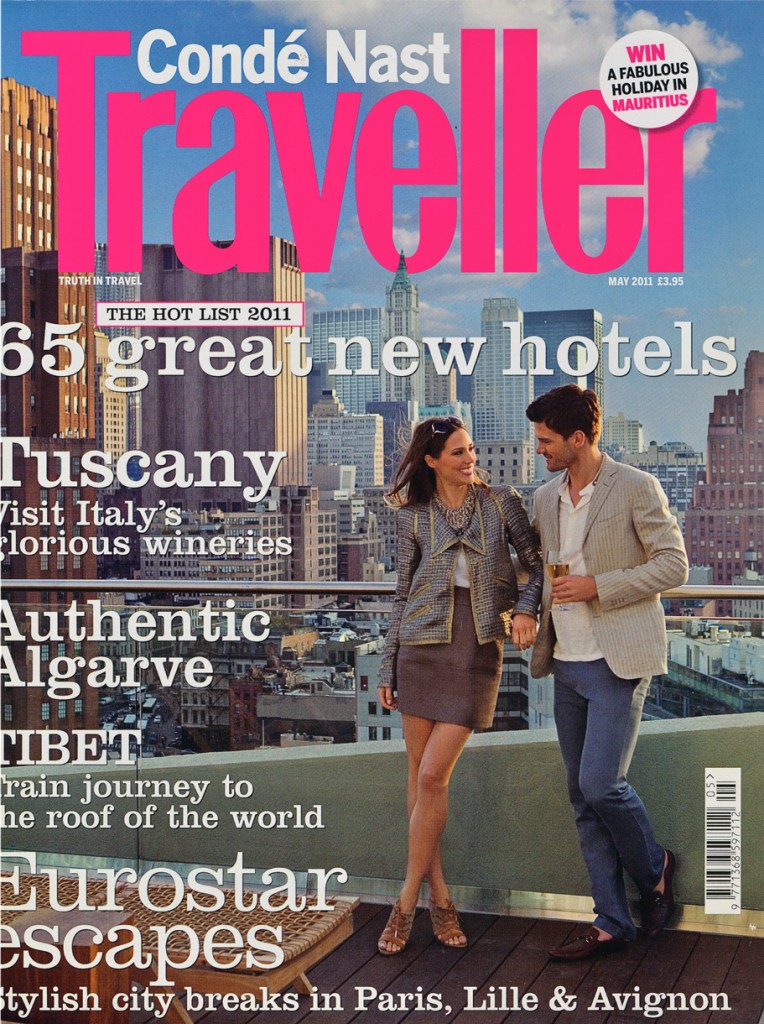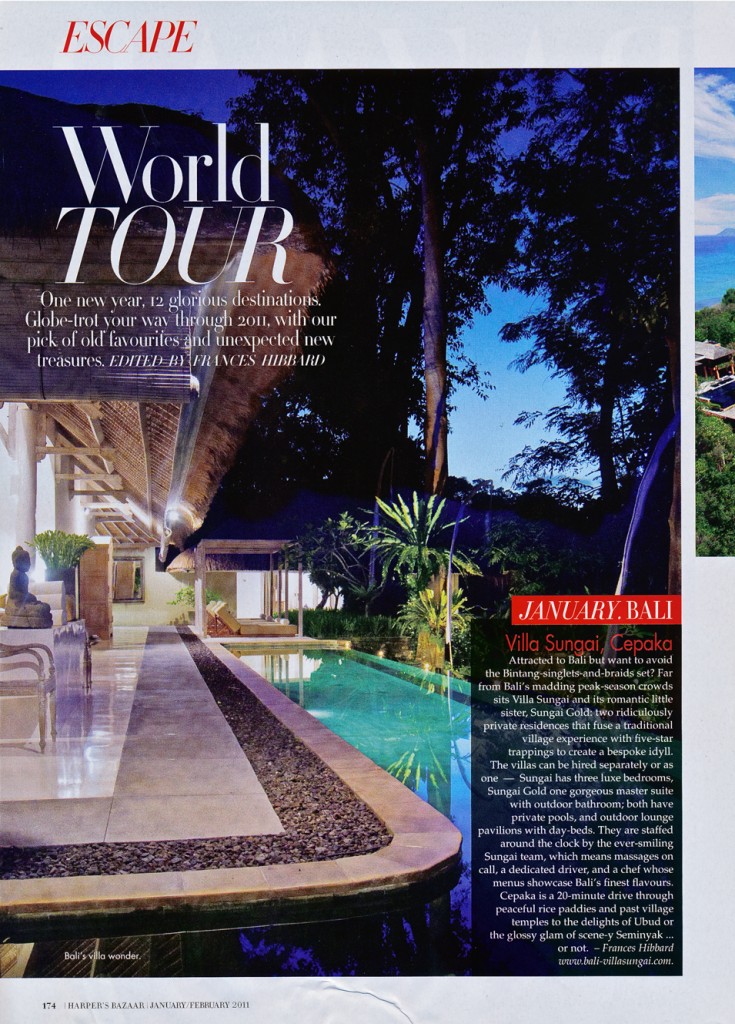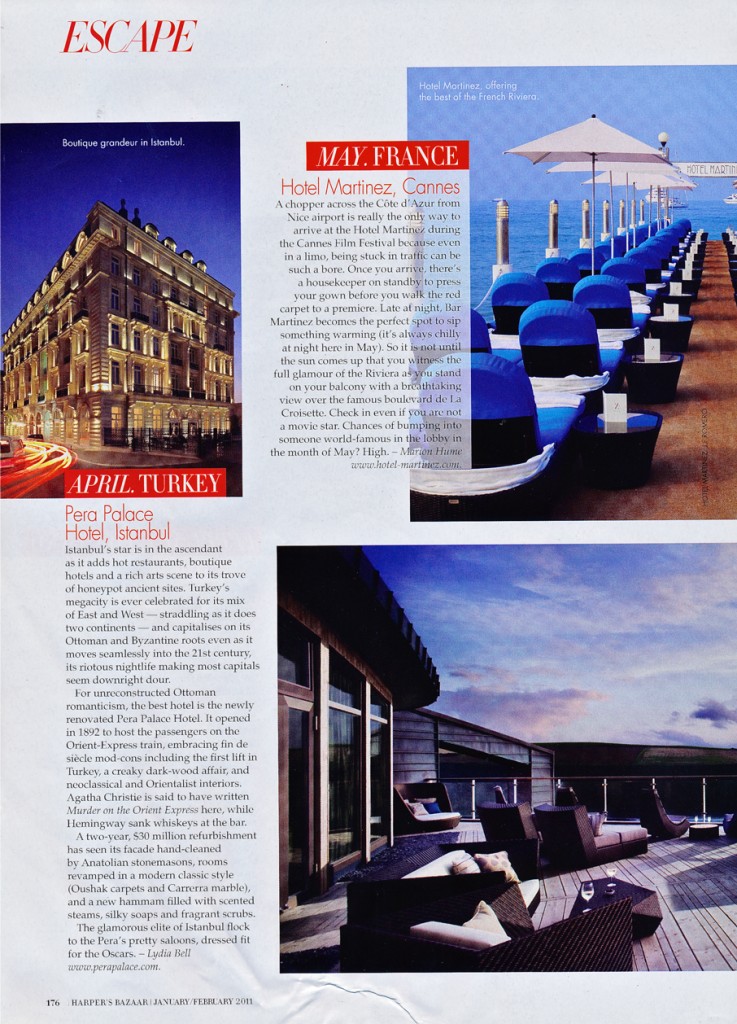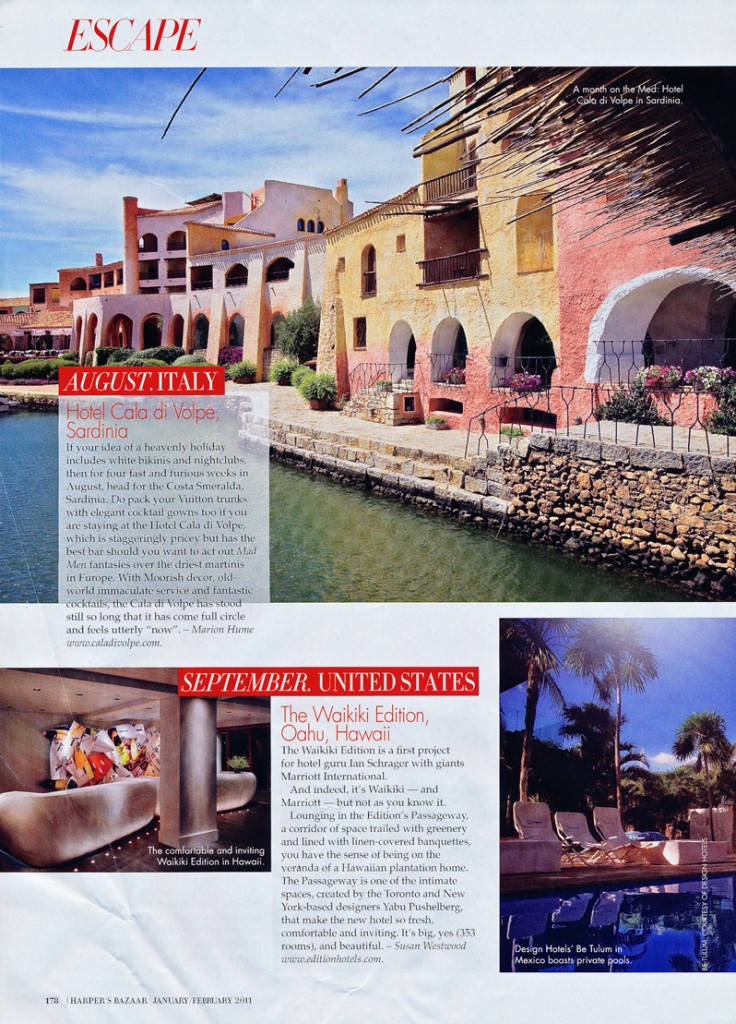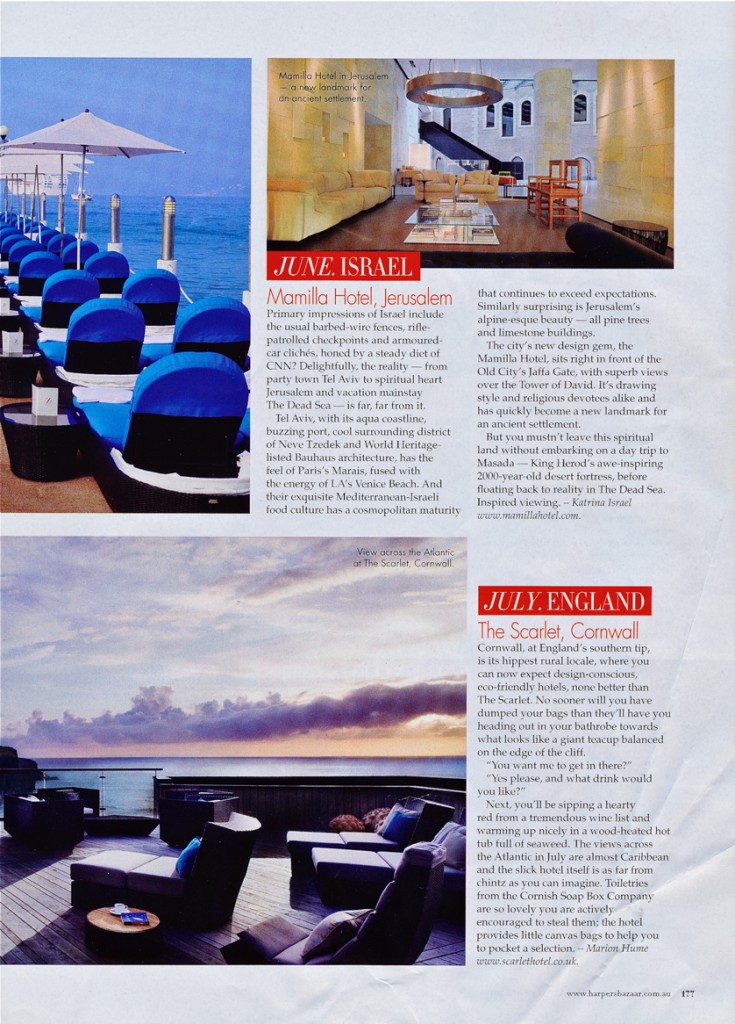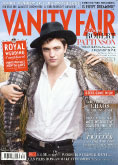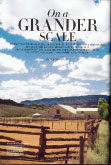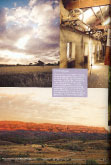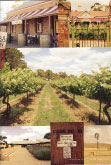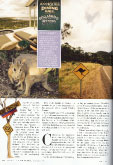Stop, Revive, Survive
Singapore + Bangkok
Harpers Bazaar | September 2011
Breaking up (the journey) is not hard to do with BAZAAR’s guide to the cities worth a trip beyond the transit lounge
by Marion Hume
Reborn as Cool: Singapore
If you still think Singapore is dull, you’ve evidently not sipped a Southside (Tanqueray 10, fresh mint, fresh lime) while lounging at Lantern, the jaw-droppingly fabulous poolside bar which sits atop the Fullerton BayHotel.
Lantern derives its moniker from the old Chinese name for Singapore’s historical Clifford Pier: Red Lantern Pier. But that’s the only old-fashioned thing about this joint. Old Singapore? Forget it. The people here have, except in the city’s excellent museums. As for the 21st-century city, where else can you find a cathedral of commerce to rival the newest Louis Vuitton megastore accessed by bridge to its very own island?
STAY: The waterfront conversion, (calling this project “ambitious” would be ridiculous understatement) is at last complete. What that means to the stopover visitor is not just glittering views but also a safe circuit that you can walk, or run at 4 am, should you choose.
Come to your senses and enjoy a leisurely breakfast on your balcony instead (scrambled eggs and shaved black truffles, for instance). The Fullerton Bay Hotel is the 100-room groovy little sister of the stately old dame The Fullerton, the latter a grand treat that can wait until you have gray hair.
Think twice before staying at the much-talked-about Marina Bay Sands, with its three, 55-storey towers topped by a jetsons-style SkyPark and an outpost of Bali icon Ku De Ta. When I visited, the line to check in for a sneak peak was longer than the line at the airport. Which is not to say this massive complex, which seems to rise out of the South China Sea, isn’t awesome to admire from a distance.
If your budget is tight, rest your head in a room so dinky, you’ll marvel how they fitted in the power shower and Nespresso machine. Blue Monday is painted blue, from ceiling to skirting board, and is teeny. It is a room on the first floor of Wanderlust, where every room is named and colour-coded (surprisingly useful when you are jet-lagged). Wanderlust is a gem in Little India, the last still-authentic neighborhood on a tiny island that is no stranger to change. But think carefully before checking in to the third floor where rooms are themed after monsters (strange, but true). The Typewriter room features a keyboard straight out of an acid trip by American novelist William Burroughs. Having spent my life on a nightmare of deadlines, I’ll pass on that one, thanks. You might like the tree monster room, though; an enchanted forest with a mezzanine bed.
Singapore is designed for stopping over. There’s the easy-peasy train link from Changhi Airport, from whence you can store your luggage and venture into town with just an overnighter. Free WiFi, local calls and non-alcoholic drinks are often standard in hotel rooms, as are iPod docks and great toiletries by the likes of Molton Brown and Kiehl’s. And toothpaste. Useful if you’ve left that in the big bag at the airport. The Quincy, my favorite stopover hotel on earth, also offers free laundry of a couple of items a day and hearty, hot, breakfast, lunch, dinner included in the room rate plus an infinity pool open all hours.
SHOP: Stopovers from Australia usually arrive in the evening, so once you’ve spend your first night at Lantern, it’s up early for shopping. The waterfront has all the luxury brands you’d expect but if you want bargains, head to Mall 313 on Orchard Road (the main shopping nexus). 313 isn’t the shiniest mall, but it stocks local brands (don’t bother unless you are of nearest Asian proportions) and the fabulous Uniqlo (which fits all).
PLAY: What to do in Singapore? The answer used to be eat then eat more, and that has stayed the same. What’s changed is the scope, which now includes Cocotte, a French brasserie at least as good as any in Paris. Cocotte is at Wanderlust. You don’t have to check in to enjoy a “pissaladiere”, one of those nicoise-style onion and anchovy tarts that are perfect for lunch.
The sights? I lived in Singapore years ago, when they were busy bulldozing most of those and I have to say, having stayed in a traditional wooden slatted home and been eaten alive by mosquitoes, I’m not sorry it’s changed. The Singapore I remember is preserved in the Chinatown Heritage Centre on Pagoda Street. Do dash in. It’s authentic except for the air-con.
Otherwise you can come to this frenetic city and just relax. The Tanjong Beach Club (day membership available) is a sexy beachside enclave of pool, volleyball, bar and cabana just a stone’s throw from the heart of the city and is the perfect place to spend a sun-soaked afternoon. Twenty-four hours in Singapore? You could just throw the bikini in your hand luggage and chil here sipping mai tais until your night flight to Europe.
Bang For Your Buck: Bangkok
Unlike Singapore, Bangkok is not a easy city to grasp fast, so keep things simple. What’s required for a 48-hour jaunt is a peaceful place to stay, a few fantastic restaurants and after some great shopping, a wonderful massage. And as little time spent in traffic jams as possible.
TRANSIT TIP: If you arrive on a Sunday, you’ll save an hour on the route in from the airport. Avoid airport transits on a Friday night. While Asia’s other tourist hubs have affordable airport links, Bangkok’s can be a nightmare. Consider that your most extravagant spend should be a limo transfer (pricey, but great are those that meet you at the gate and whisk you past lengthy immigration lines) or get your hotel to send a car.
The problem with Bangkok is that there is no central taxi service hub and no reliable maps of a city growing and changing by the minute. Unless you have girl-scout skills of navigation, it’s wise not to believe the driver who says “near, near” and urges you got get out prematurely. Always carry a card with your hotel number, the phone number of where you are going and the address in Thai and English script, and know that calls on your driver’s local mobile are almost free (tip heavily). It is not unusual for taxi drivers to be remote-phone-navigated to your destination.
STAY: Check in at The Eugenia, an old colonial house with a pool in the central courtyard. But hang on: Thailand has never been colonized, so what’s with this “Indochine” mansion- all dark wood floors, high mahogany beds and copper bathtubs? It’s a fantasy, built just five years ago. Who cares? The details, both antique and repro, and the vast tables of white orchids, are glorious. Stay in the neighborhood until you get your bearings. Ruen Mallika is a wonderful restaurant to Thai-up your tastebuds and just a short taxi ride from the Eugenia.
PLAY: For cocktails, it is Vertigo on the roof of the Banyan tree; aptly named given it is 61 floors up (check online re: the dress code). Or for another way to achieve bliss with no dress code whatever, get a Thai massage at Oasis Spar (they’ll send a car to your hotel and you could leave from here direct to the airport).
EAT: You must go to Nahm, Australian Thai food guru David Thompson’s restaurant in the Metropolitan hotel. Sell the car, rent your house out, do whatever it takes to eat here. What to eat? Frankly, my notes are pathetic, I got as far as ” clear soup with crab meat, scallop salad with grated coconut” before I realised no words of mine could describe the majesty of this food. Simply brilliant.
SHOP: With 48 hours, you’ve just enough time to order a bespoke suit form the Tailor at Sukhumvit Road (try Raja Royal Tailor at Sukhmvit 4, Tanika at Sukumvit 14). For beautiful glassware, go to Lamont at the Four Seasons.

